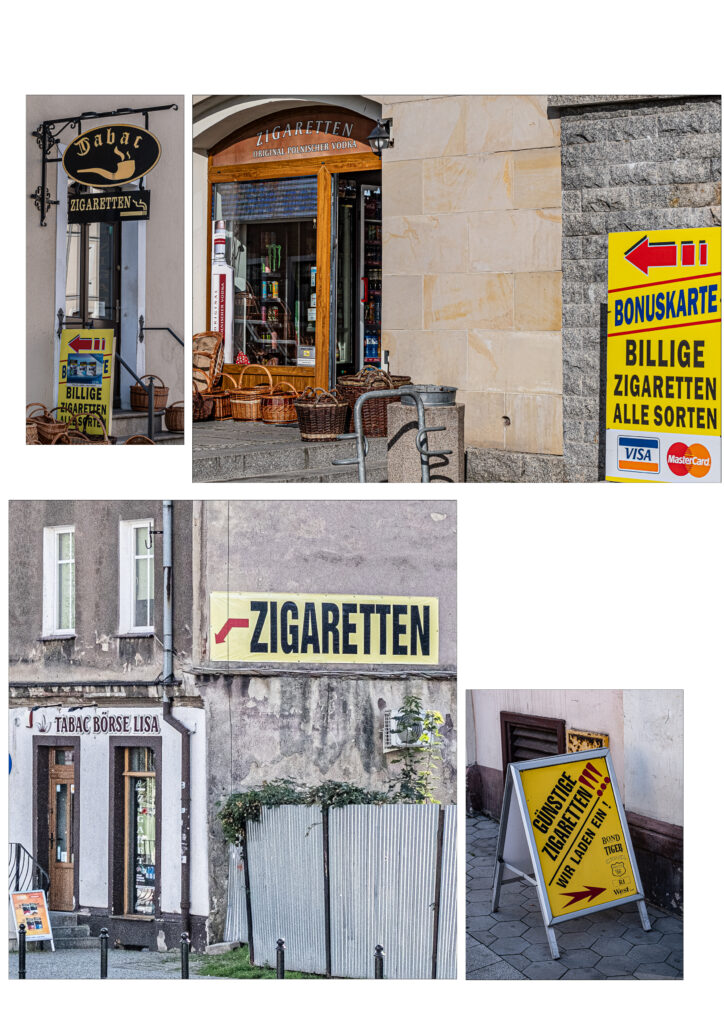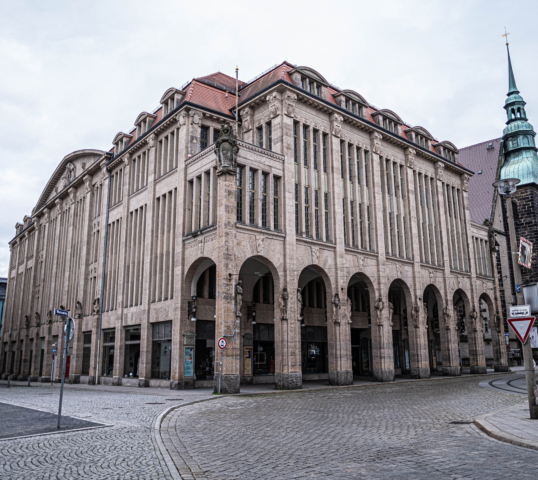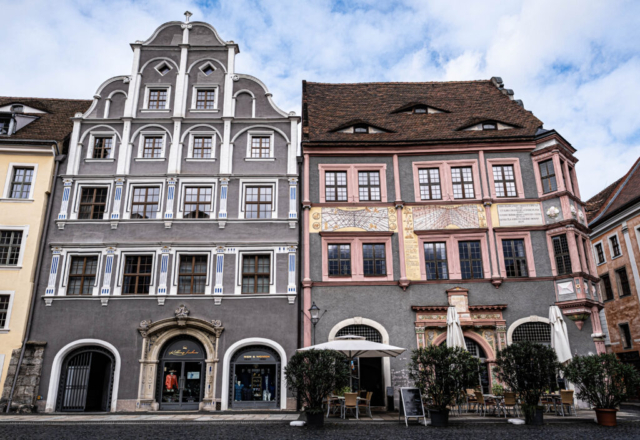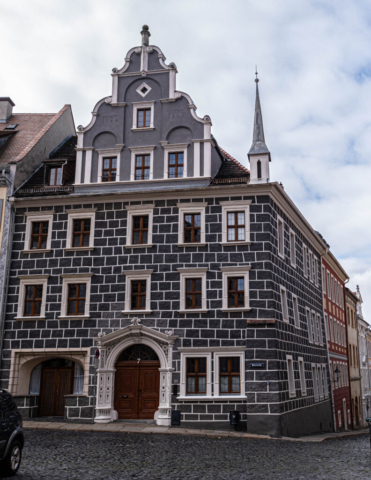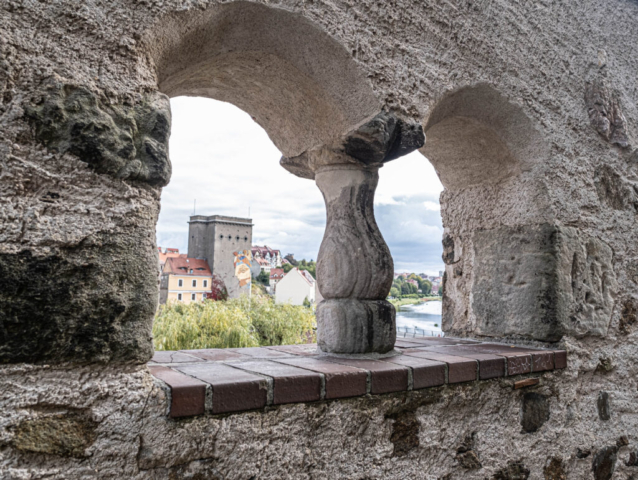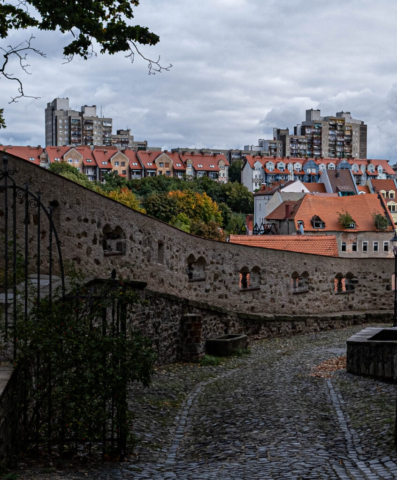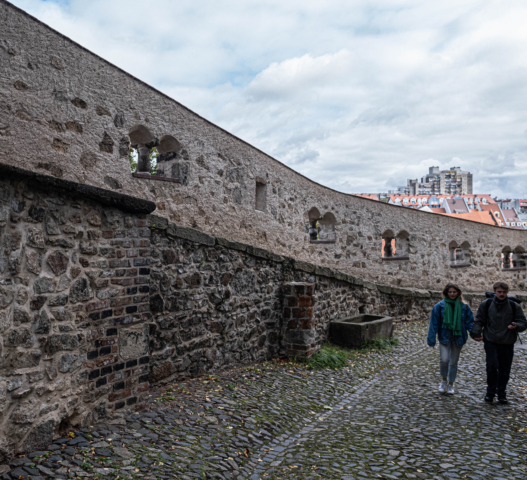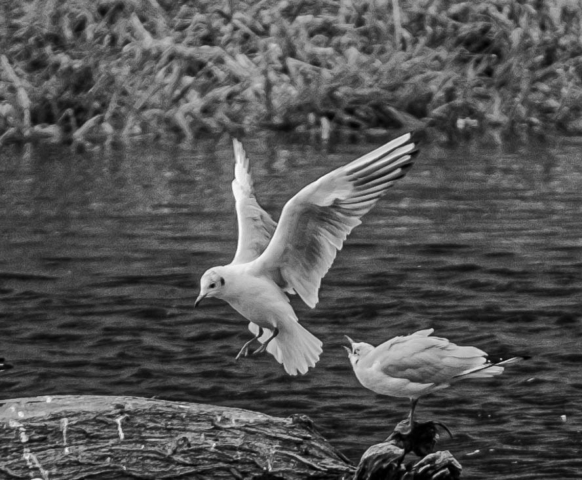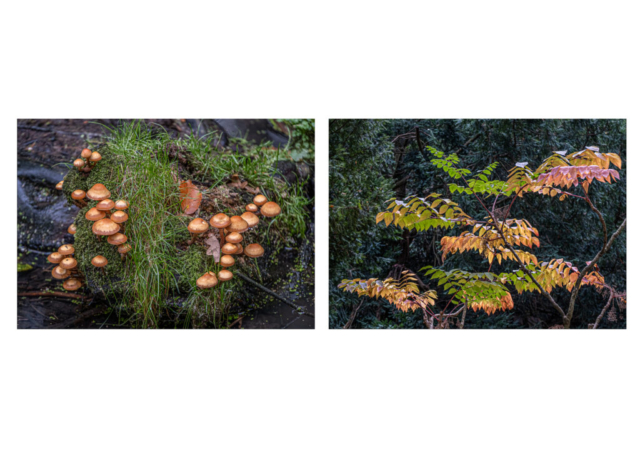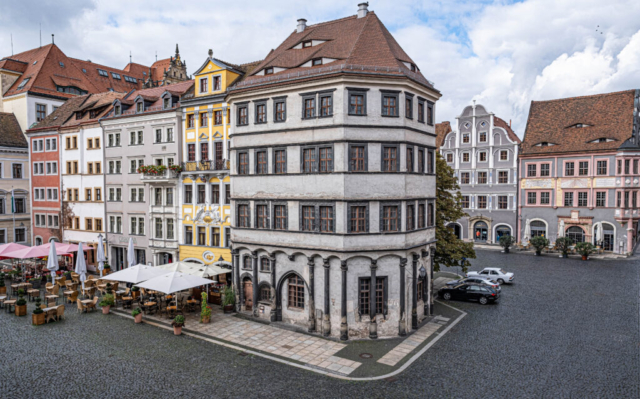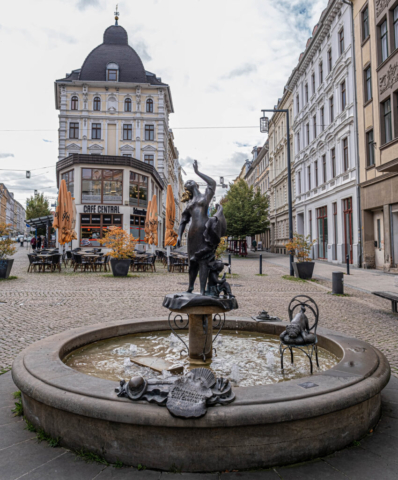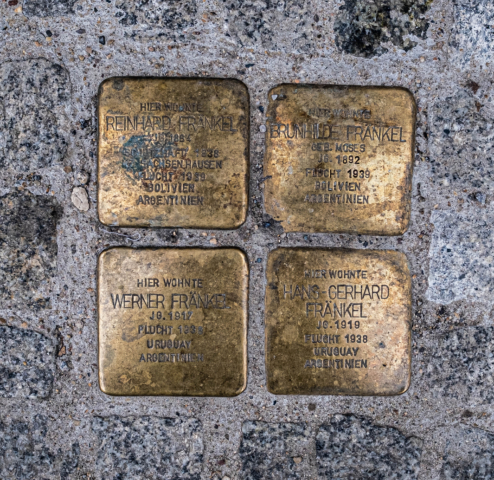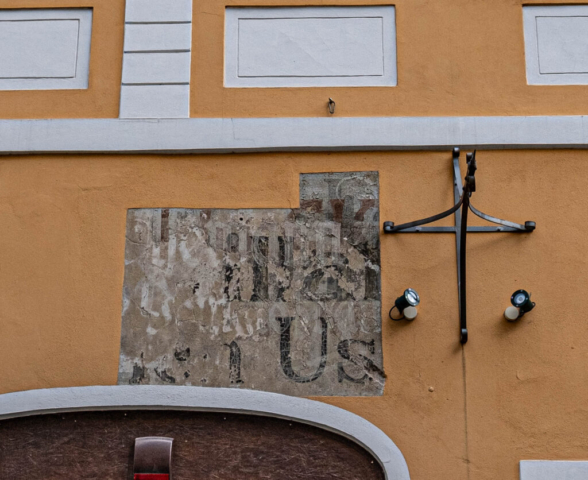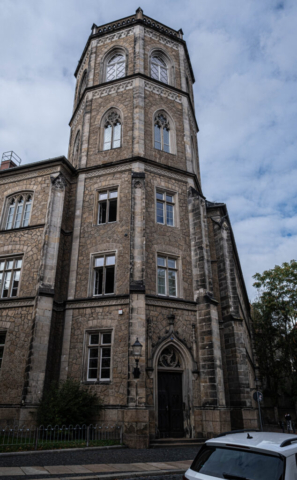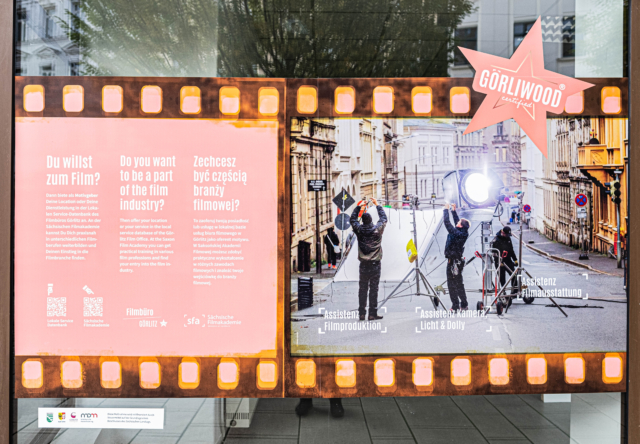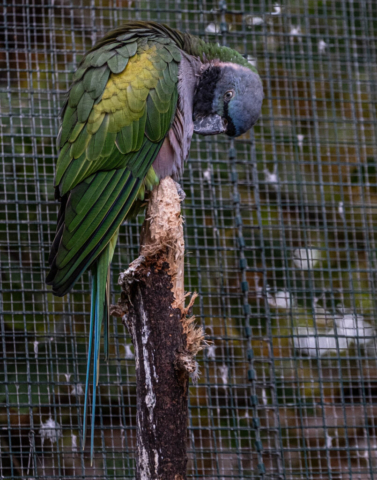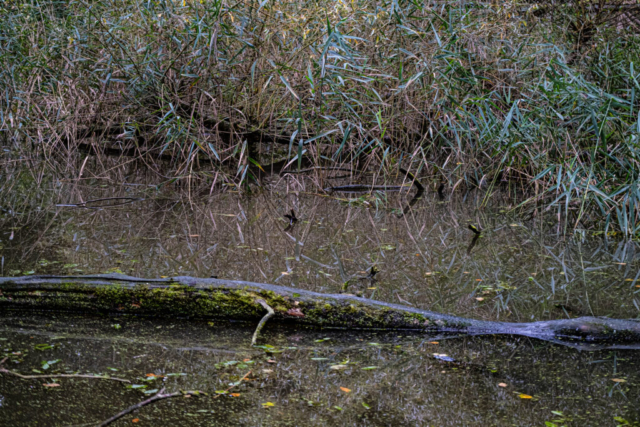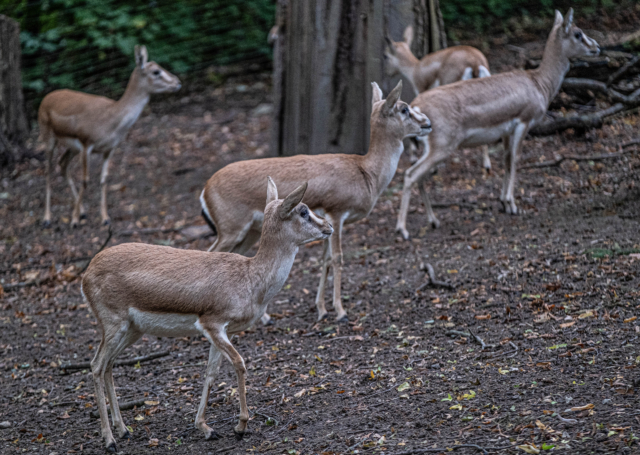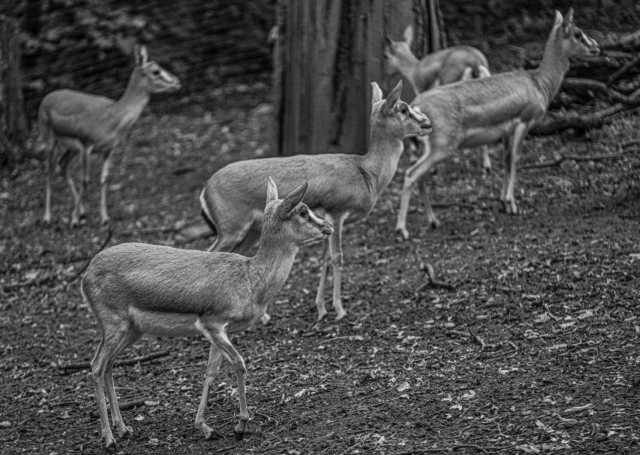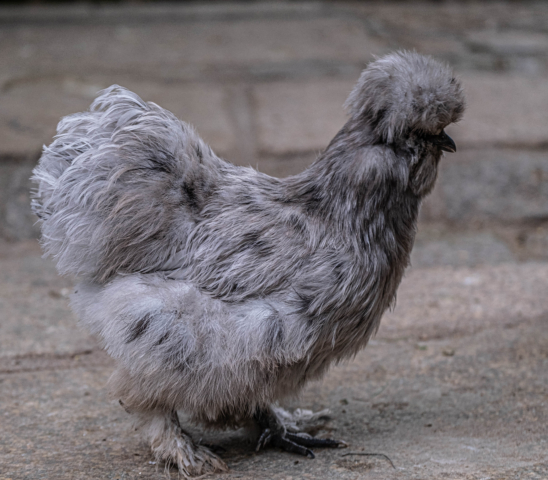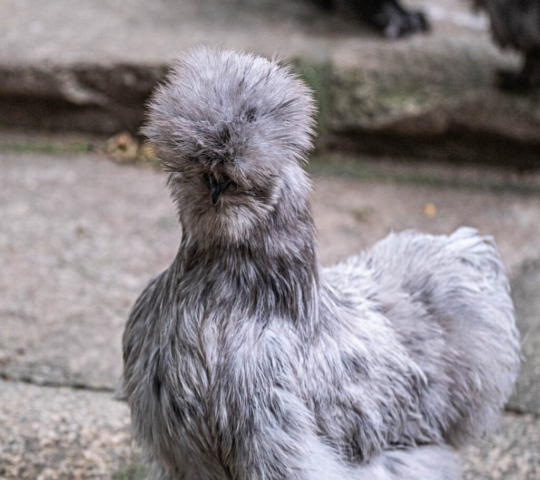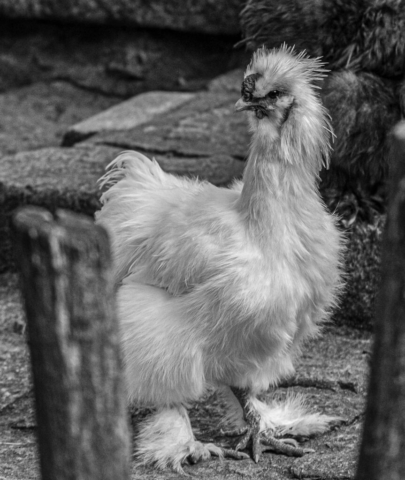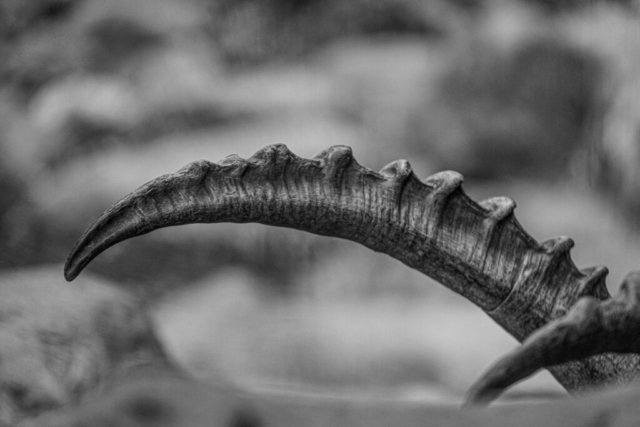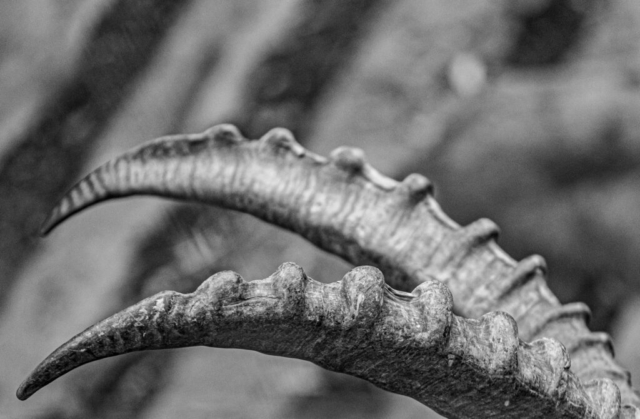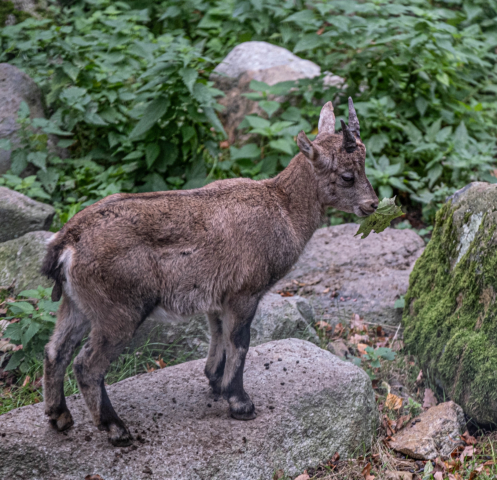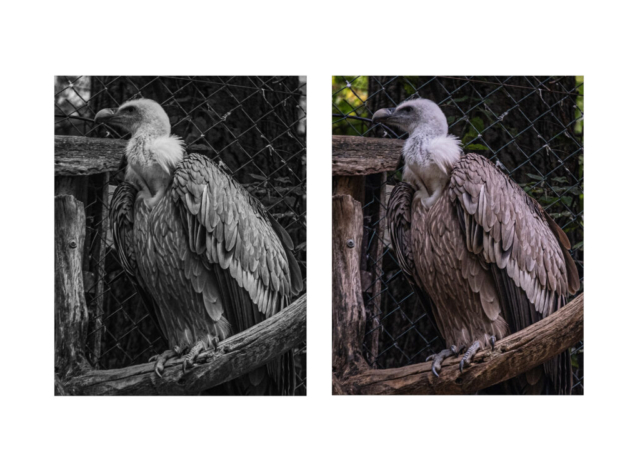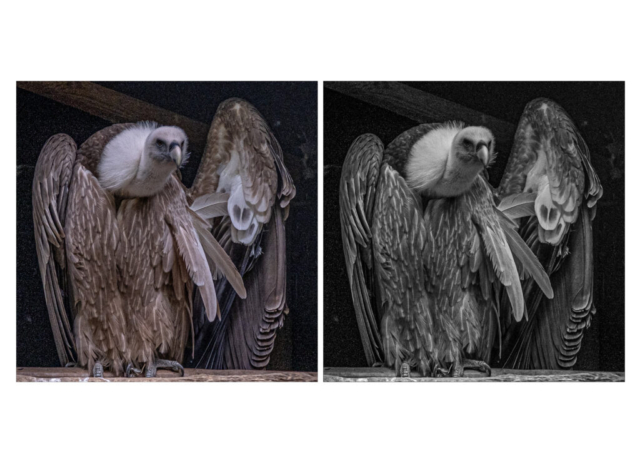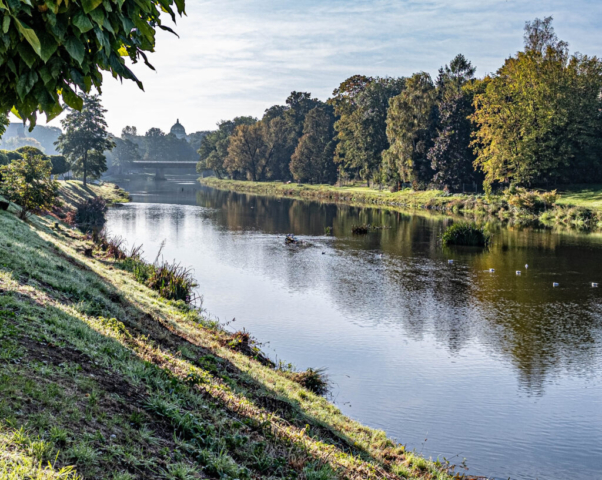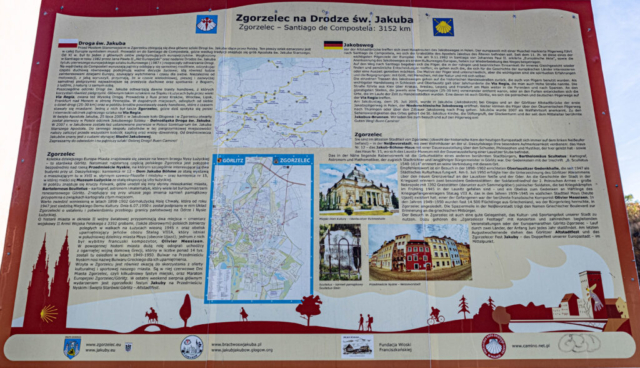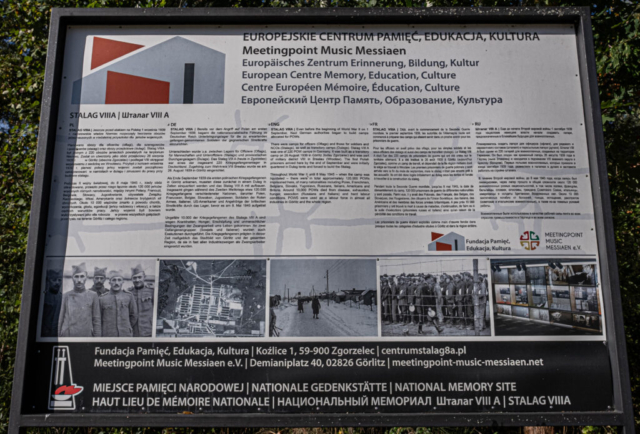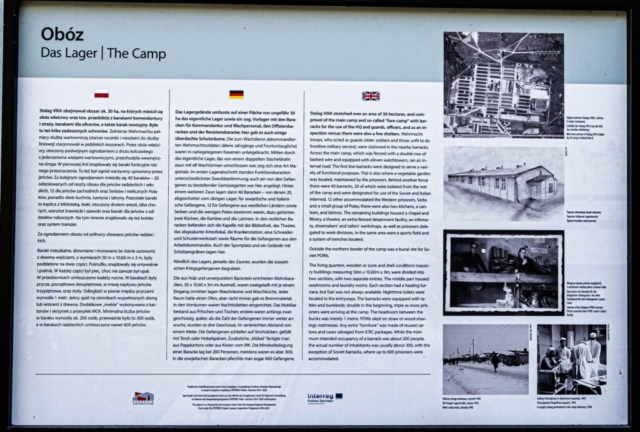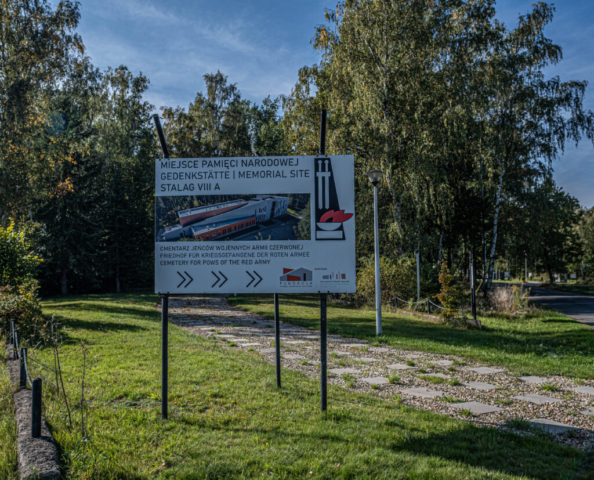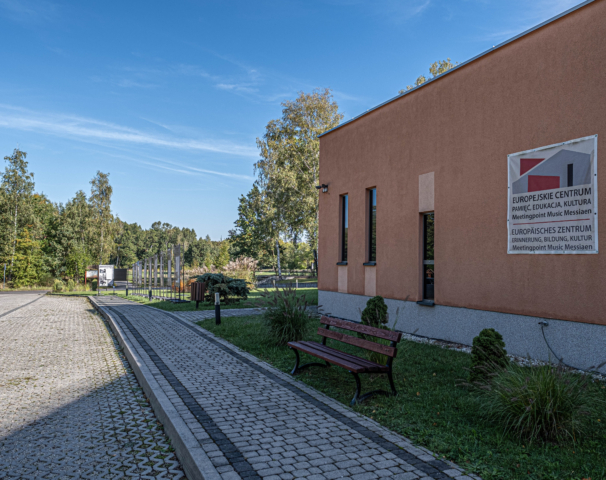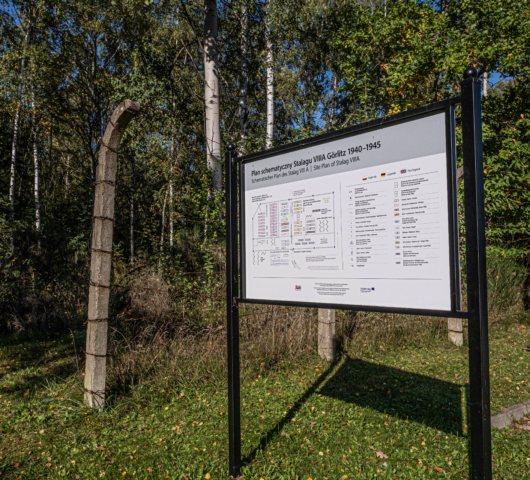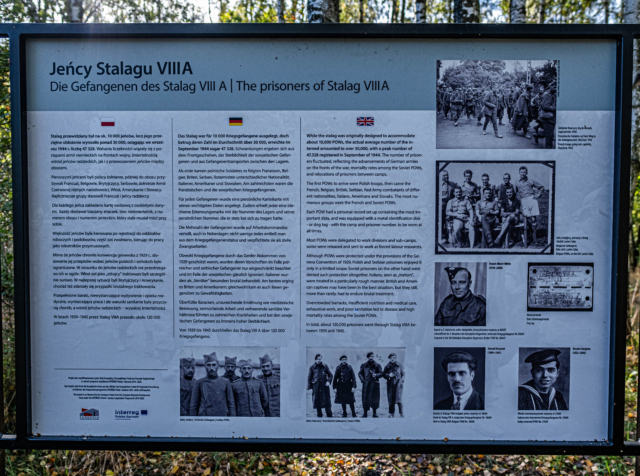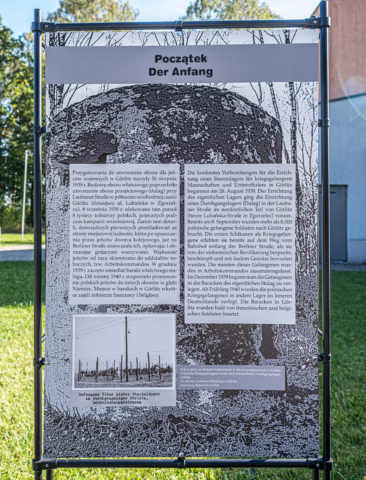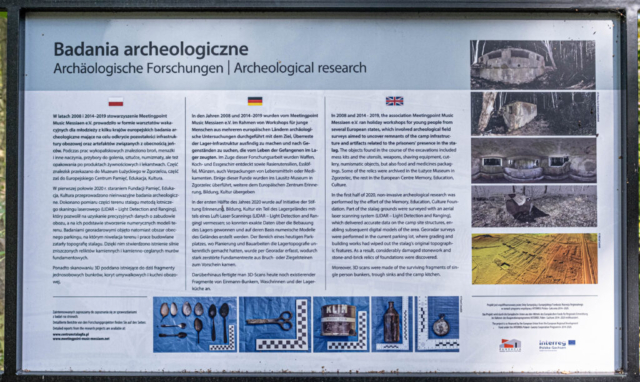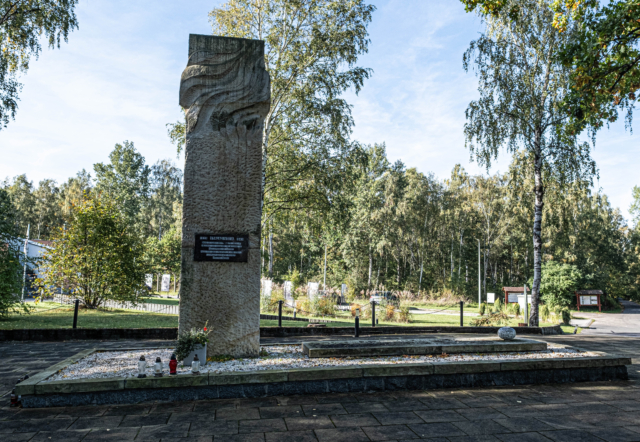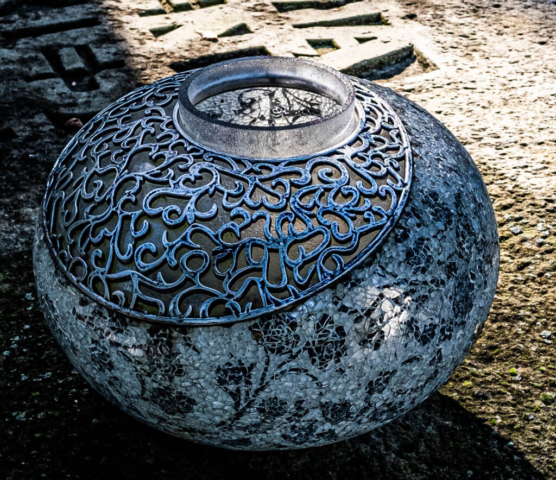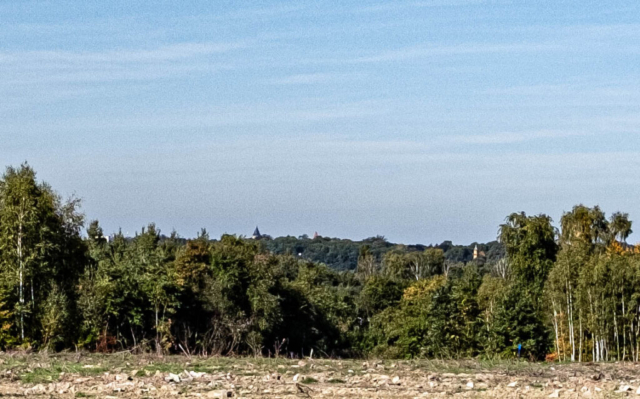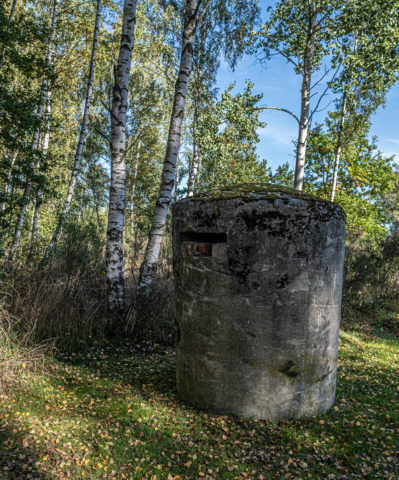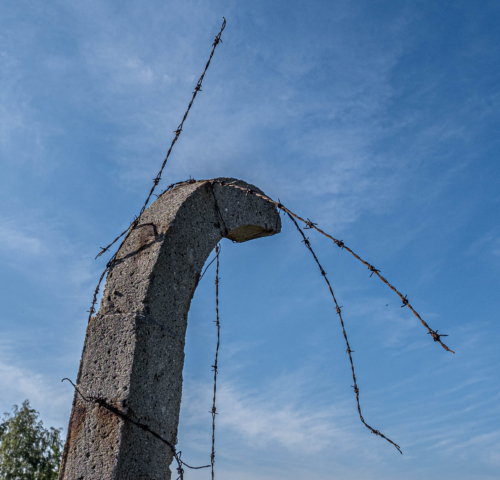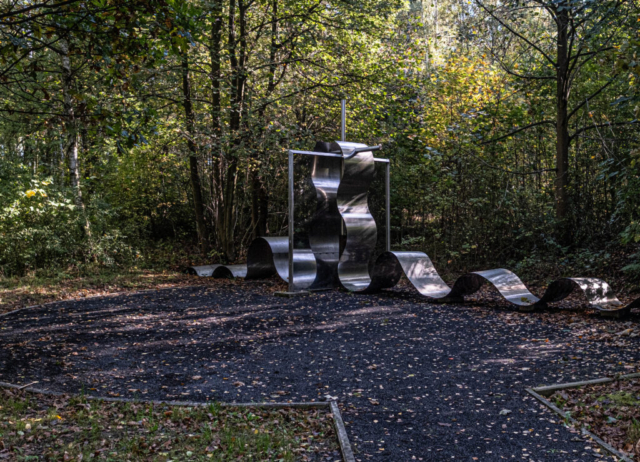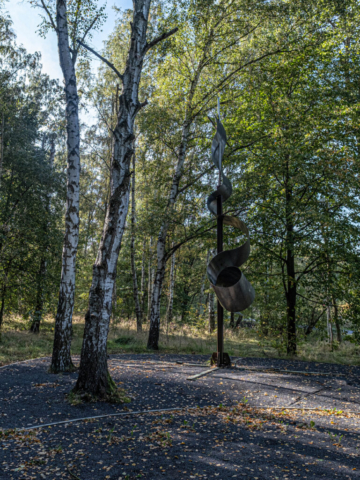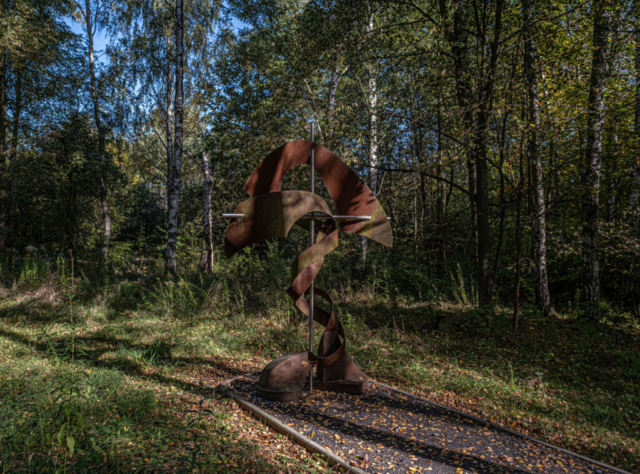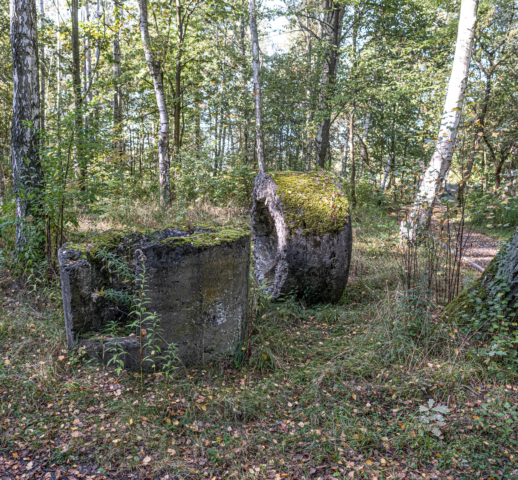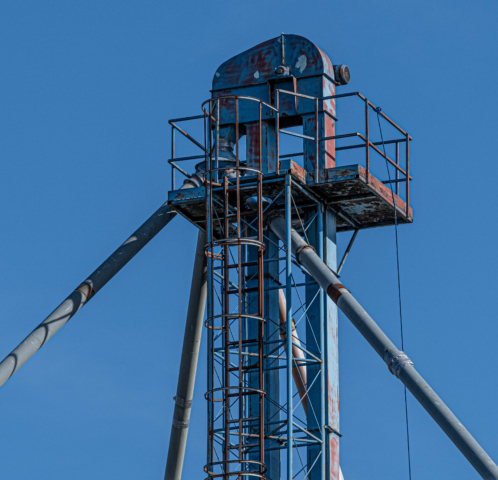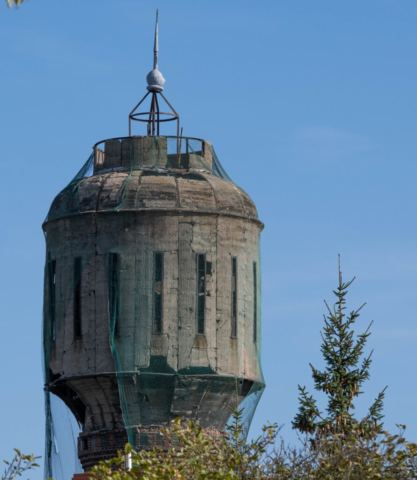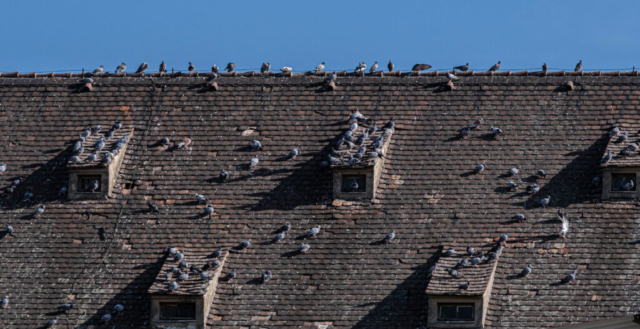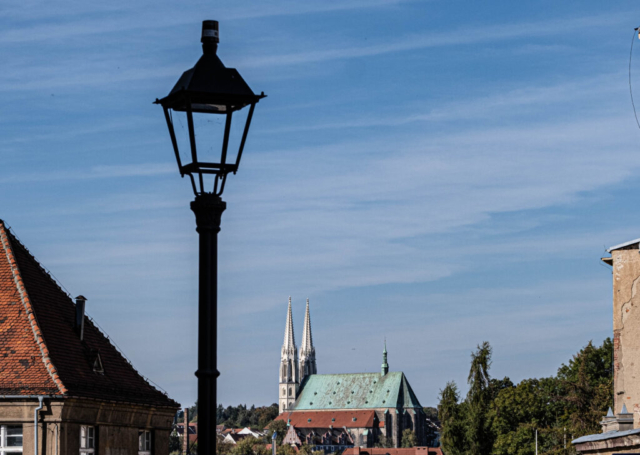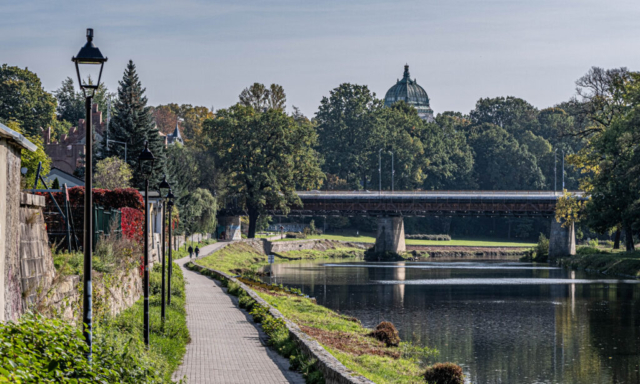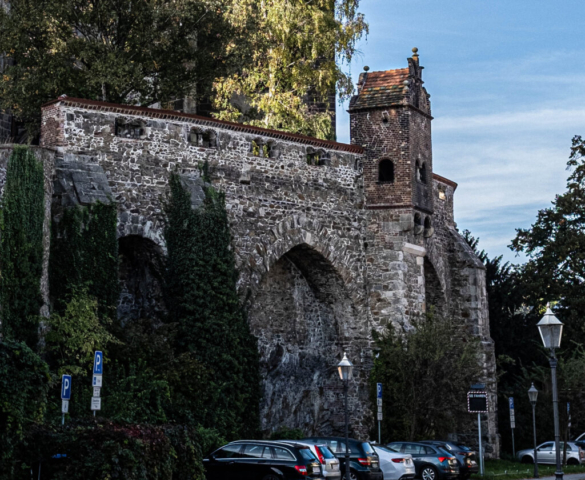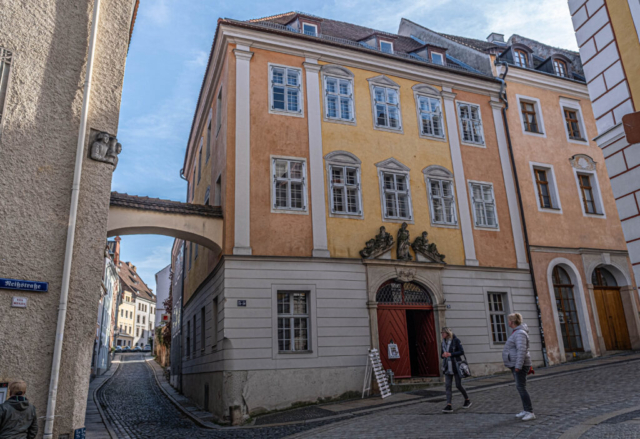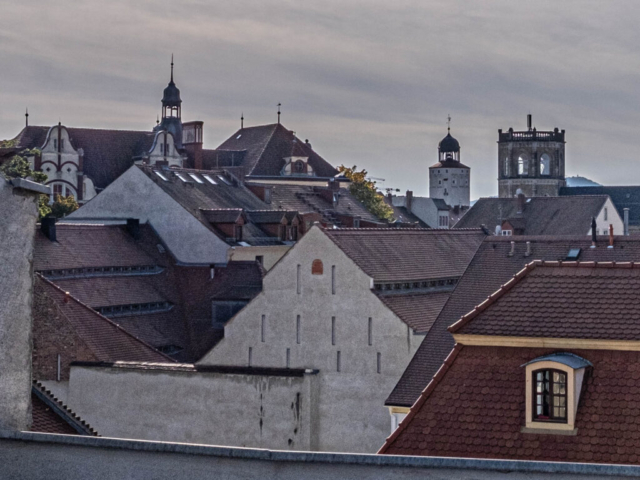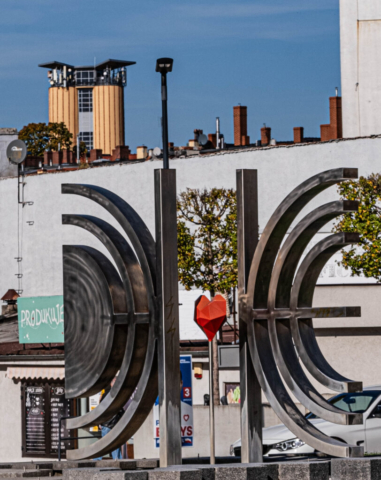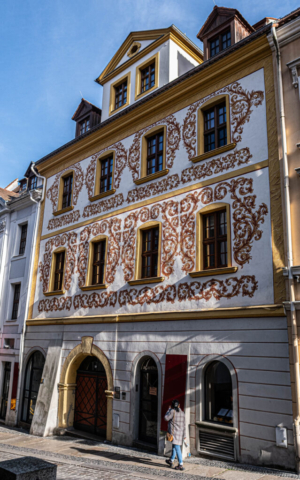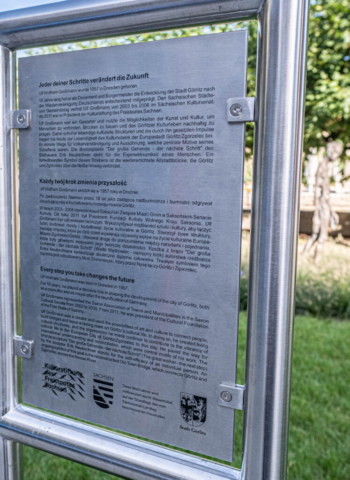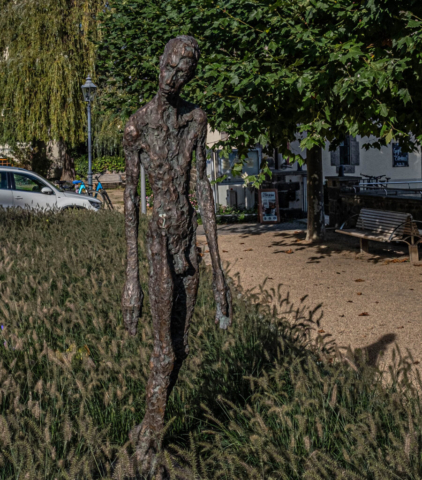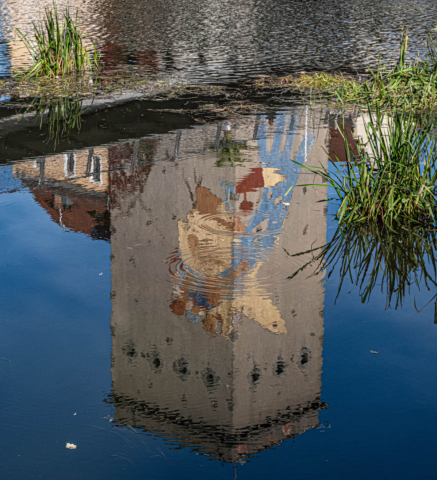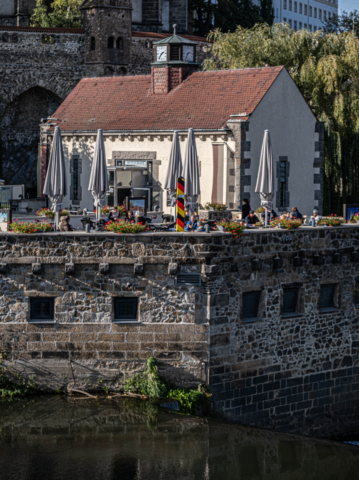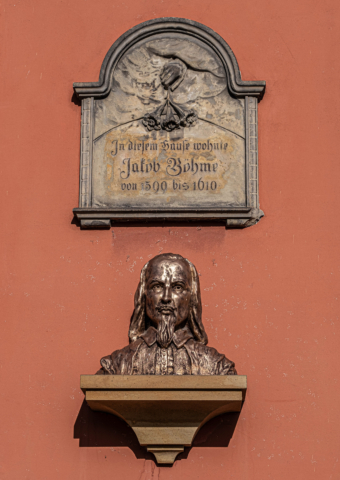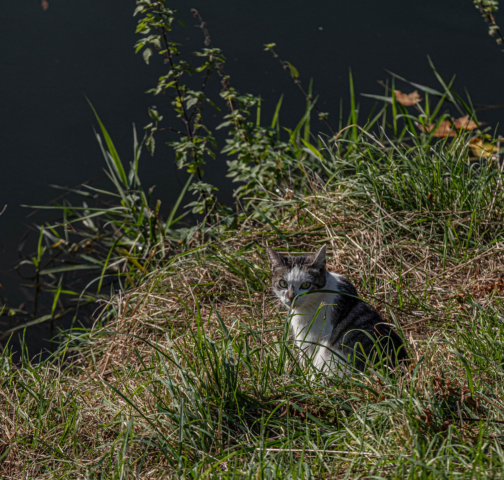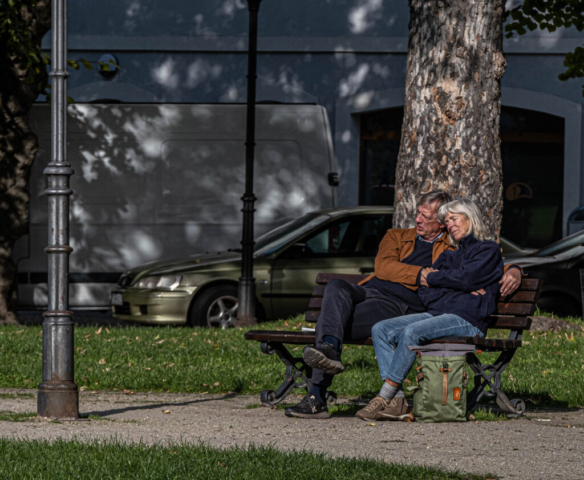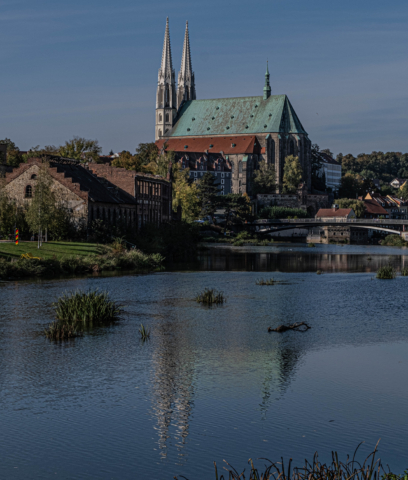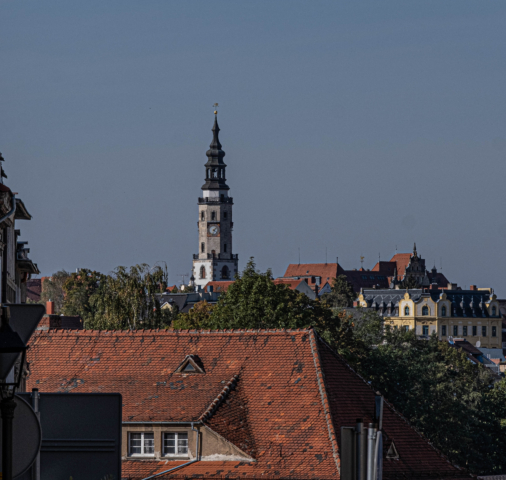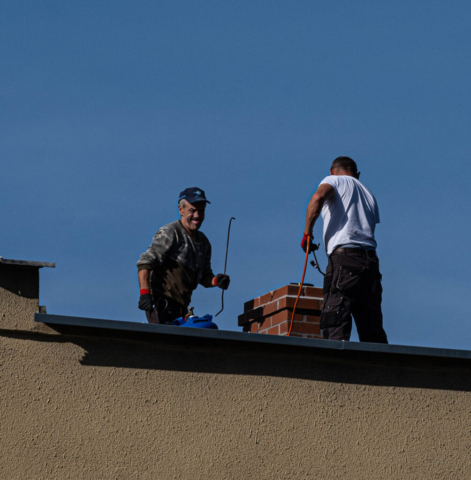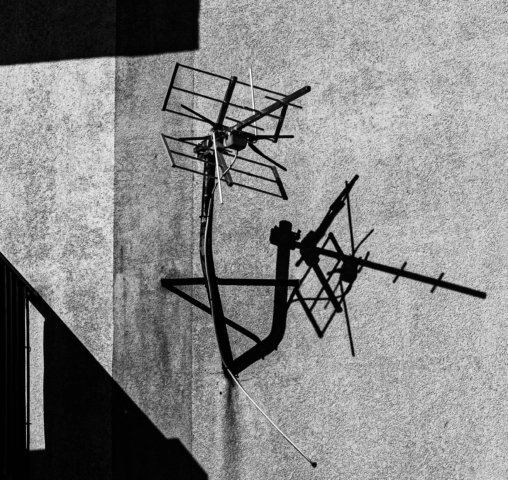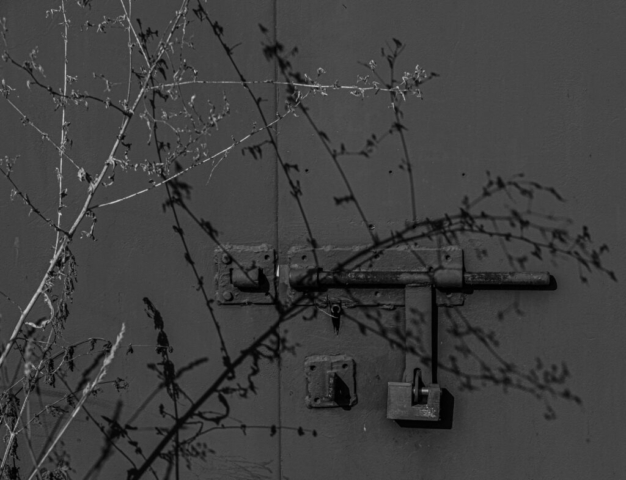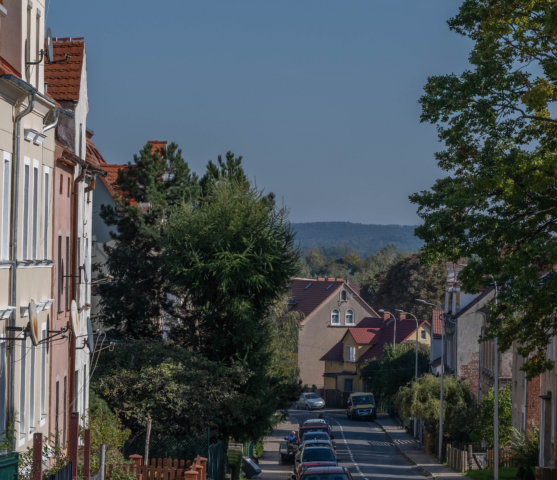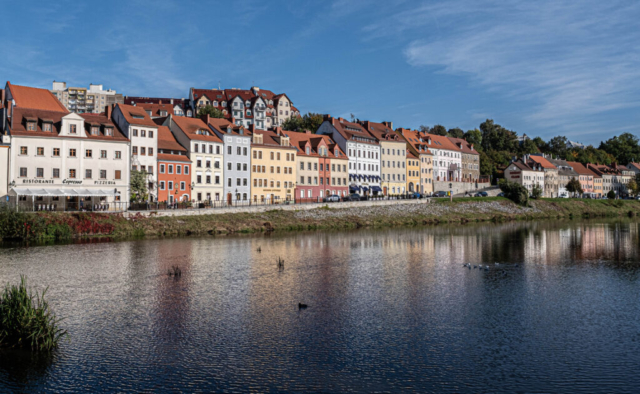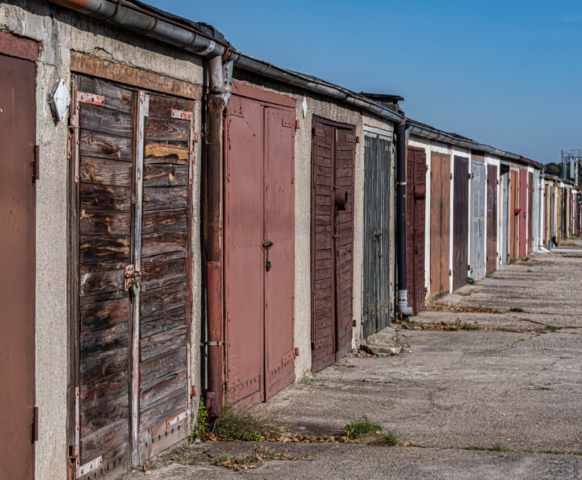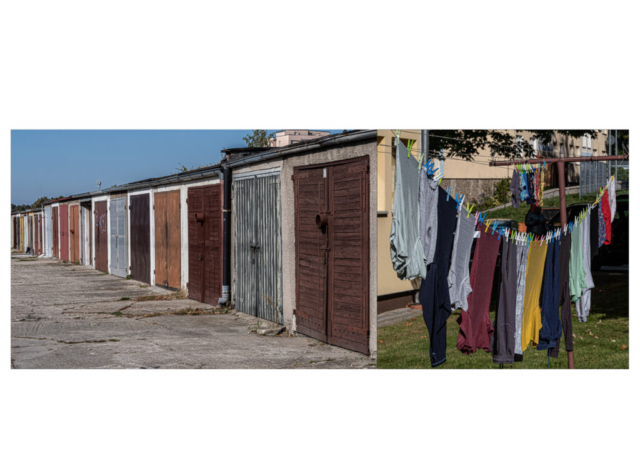IN PROGRESS
Day One – arrival, walkaround. Apart from walking from the station to the hotel, this is the route on MapMyWalk.
Görlitz (a.k.a. Görliwood, apparently) has been a popular film location for many mainstream movies in recent years. Films such as Inglourious Bastards, Monuments Men, Around The World in 80 Days, and The Book Thief were all filmed in charming streets of Görlitz. Because the city was spared from destruction during WW2, it serves as a perfect filming location for many films that try to capture the setting of pre-war Germany. Alledgedly.
Wes Anderson’s Grand Budapest Hotel was filmed in this defunct department store:
Day 2, a bit more walking (the route on MapMyWalk here) and Naturschutz-Tierpark Görlitz.
The first photo is of the view from my hotel room. Blissfully quiet at night at this time of year, but probably not so much in the summer.
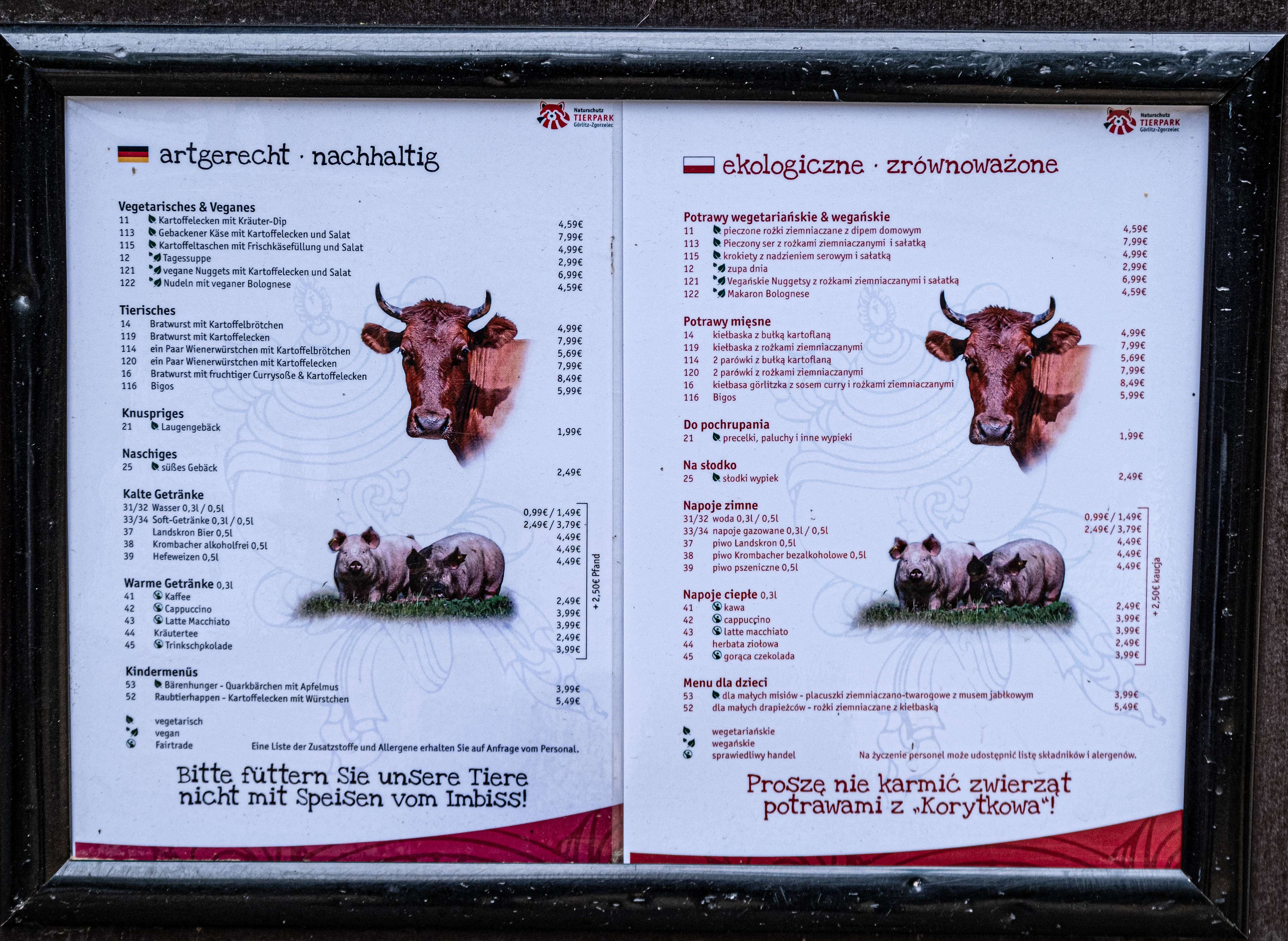
Day 3 – walk to Zgorzelec and Stalag VIII A. The route on MapMyWalk here.
It was still a bit misty when I crossed the river and quickly reached the café where I had decided to have breakfast (my hotel is nice, and well located, but the breakfast is nothing to write home about and the coffee downright appalling). Czarna Kaffka turned out to be a real find.
Although “Polenmarkt” sounds interesting (note the list of illegal products sold there :-)): https://www.holiday-zeit.de/polenmarkt-goerlitz-kleiner-markt-zgorzelec-schnaeppchenjagd/polen/1911/, I did not make it there but walked straight to the former prisoner-of-war camp Stalag VIII A, located at the southeastern edge of Zgorzelec. 120. 000 prisoners were registered there between 1939 and 1945, among them the French composer Olivier Messiaen.
At the outbreak of World War II, Messiaen was drafted into the French army. Due to poor eyesight, he was enlisted as a medical auxiliary rather than an active combatant. He was captured at Verdun, where he befriended clarinettist Henri Akoka. They were taken to Görlitz in May 1940, and imprisoned at Stalag VIII-A. He met a cellist (Étienne Pasquier) and a violinist (Jean le Boulaire) among his fellow prisoners. He wrote a trio for them, which he gradually incorporated into a more expansive new work, Quatuor pour la fin du temps (“Quartet for the End of Time”). With the help of a friendly German guard, Carl-Albert Brüll, he acquired manuscript paper and pencils. The work was first performed in January 1941 to an audience of prisoners and prison guards, with the composer playing a poorly maintained upright piano in freezing conditions and the trio playing equally old, badly maintenanced instruments. The enforced introspection and reflection of camp life bore fruit in one of 20th-century classical music’s acknowledged masterpieces. The title’s “end of time” alludes to the Apocalypse, and also to the way that Messiaen, through rhythm and harmony, used time in a manner completely different from his predecessors and contemporaries.
In large part due to the persuasions of Messiaen’s friend and teacher, Marcel Dupré, Messiaen was released in May 1941.
The idea of a European Centre of Education and Culture “Meeting Point Music Messiaen” on the site of Stalag VIII-A, for children and youth, artists, musicians and everyone in the region emerged in December 2004, was developed with the involvement of Messiaen’s widow as a joint project between the council districts in Germany and Poland, and was completed in 2014.
Warning: This is an outdoor exhibit, there is no staff, and no toilets, also not between this place and the centre of Zgorzelec.
On the way back:
Funny how a diptych can seem like a great idea in your head, until you carry it out hahaha:
And finally, Poland has some catching up to do:
